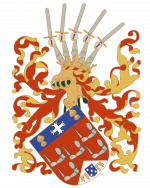Kelly the Mad
Congolese Empire
- Oct 28, 2020
- 1,306
SECURE AND ENCRYPTED, FOR THE EMPEROR AND GOD |
O P E R A T I O NㅤㅤㅤO V E R F L O W |
OBJECTIVE | Cause deterrent damages to Saudi Arabian infrastructure and military assets to coerce a ceasefire |
DATE | 16 February 2000- |
LOCALE | RED SEA, SAUDI ARABIA |
STATUS | ACTIVE PHASE |
BELLIGERENTS |
IMPERIAL STATE OF THE CONGO
| KINGDOM OF SAUDI ARABIA
|
Commanders & Leaders |
Tamu Alakija (Chief of the Air Force) Omari Gowon (Emperor of the Congo) | --- |
Strength |
IMPERIAL STATE OF THE CONGO
TOTAL PERSONNEL: 127 | --- |
Casualties & Losses |
--- | --- |
Attachments
Last edited:



